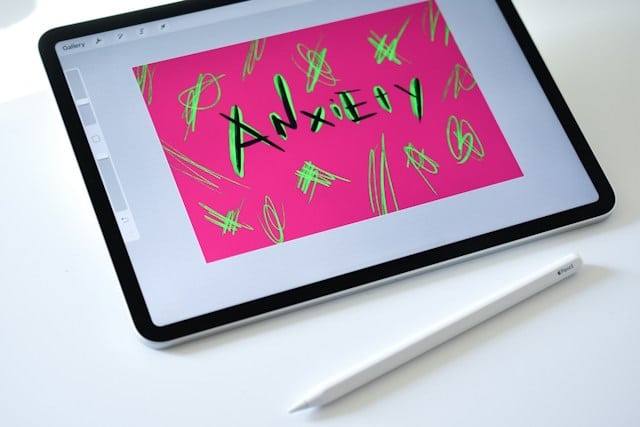Fear, anxiety, and phobias are not uncommon disorders in today’s society. They affect a significant proportion of the population, causing distress, discomfort, and often leading to a lower quality of life. Traditionally, these disorders have been treated with a combination of medications and cognitive-behavioural therapy (CBT). But there is a new player on the stage of mental health treatment – Virtual Reality Therapy (VRT), also known as Virtual Reality Exposure Therapy (VRET). This innovative treatment approach utilises cutting-edge technology to expose patients to their fears or anxiety triggers in a controlled, virtual environment. But does this futuristic approach really work? Can the power of ‘virtual’ help us conquer ‘reality’? Let’s delve into this topic.
Understanding Virtual Reality Therapy
Before we explore the potential benefits of VRT, let’s first understand what it is. VRT is a type of therapy that uses virtual reality technology to simulate real-life situations. This therapeutic approach is particularly useful for treating disorders where exposure to the object or situation causing the fear or anxiety is a crucial part of the healing process.
A découvrir également : How Is Online Streaming Influencing the Console Gaming Industry?
The virtual environments used in VRT are created using computer software and can be customized to suit the individual needs of each patient. The patient wears a head-mounted display that provides a 360-degree field of view, immersing them in a virtual world. The therapist can control the intensity and type of exposure, ensuring that the patient feels safe and comfortable.
VRT and Anxiety Disorders
Anxiety disorders are characterized by intense, debilitating worry or fear that can interfere with daily activities. These disorders can be triggered by a variety of factors, including social situations, specific phobias, or generalized anxiety.
Sujet a lire : How does green infrastructure contribute to climate resilience in urban areas?
Various studies have explored the efficacy of VRT in treating anxiety disorders. According to a study published by the US National Library of Medicine National Institutes of Health (PubMed and PMC), VRT has been shown to be a successful treatment for social anxiety disorder. In this study, patients who underwent VRT showed a significant decrease in anxiety symptoms compared to those who received traditional therapy.
Another study found that VRT can be particularly effective when it comes to treating specific phobias, such as fear of flying or fear of spiders. By exposing people to their fears in a controlled environment, VRT allows patients to gradually confront and overcome their anxieties.
VRT and Phobias
A phobia is an intense, irrational fear of a specific object, activity, or situation that poses little to no actual danger. These fears can be so overwhelming that people go to great lengths to avoid what they fear.
VRT is an ideal treatment for phobias because it allows patients to confront their fears in a safe, controlled environment. For instance, if a patient has a fear of heights, they can be “exposed” to a virtual environment where they are standing on the edge of a tall building. Over time, this exposure helps them to overcome their fear.
According to a study published in the Journal of Anxiety Disorders, VRT-based exposure therapy was found to be as effective as real-life exposure therapy in treating acrophobia (fear of heights). The patients who underwent VRT-based therapy experienced a significant decrease in their fear and avoidance behaviors.
Challenges in Implementing VRT
Despite its promising results, there are some challenges associated with implementing VRT. One of these is the cost. The equipment and software required for VRT can be expensive, making it a pricey treatment option. Fortunately, as technology becomes more advanced and widespread, the costs are expected to decrease.
Another challenge is the potential for side effects. Some people may experience cybersickness, a form of motion sickness caused by the virtual environment. However, most people find that these symptoms are temporary and decrease with repeated exposure to the virtual environment.
Lastly, while VRT appears to be a promising treatment option for anxiety disorders and phobias, more research is needed to fully understand its long-term effects and how it compares to traditional therapy methods.
Despite these challenges, the potential benefits of VRT can’t be ignored. It offers a new, innovative way to address mental health disorders, which could be a game-changer for many patients. With continued research and development, VRT could become a standard treatment option in mental health care.
The Future of VRT
The future of VRT looks promising. As technology continues to advance, it’s likely that we’ll see more sophisticated virtual environments that can mimic real-life situations even more accurately. This could make VRT even more effective for treating anxiety disorders and phobias.
Additionally, as more research is conducted, we may discover new applications for VRT. It’s possible that this technology could be used to treat a wider range of mental health disorders, providing an innovative solution for those who struggle with traditional treatment methods.
In conclusion, while VRT is still a relatively new treatment option, it holds great potential for the future of mental health care. By providing a safe, controlled environment for patients to confront their fears, it could revolutionize the way we treat anxiety disorders and phobias.
Advancements in VRT and Its Accessibility
Advancements in technology have made virtual reality more accessible and affordable than ever before. This is a significant development in the field of Virtual Reality Therapy (VRT). For instance, Google offers an inexpensive cardboard VR viewer that can be used with a smartphone. There are also several VR applications available that are designed specifically for exposure therapy, making it possible for more people to benefit from this cutting-edge treatment.
The use of VR in occupational therapy has also been explored. According to an article on PubMed, VRT has been successfully used to help stroke patients regain motor skills by providing them with a safe, virtual environment to practice in. This revolutionary application of VRT demonstrates its potential beyond just the treatment of anxiety disorders and phobias.
However, it’s important to note that while the cost of VR equipment has decreased, the cost of developing and maintaining the software used in VRT can still be high. The specialized nature of these applications often requires the involvement of developers experienced in both VR and mental health treatment. This can drive up costs, making VRT a more expensive option compared to traditional therapy methods.
Virtual Reality Therapy: The Verdict
The use of Virtual Reality Therapy (VRT) for the treatment of anxiety disorders and phobias has shown promising results in various studies. The ability to control the intensity and type of exposure in a safe, virtual environment makes VRT a potentially effective treatment option for these conditions. A PubMed Google Scholar article demonstrated the success of VRT in treating social anxiety and specific phobias like fear of flying.
However, it must be remembered that while VRT holds promise, it also comes with challenges. The cost, access to technology, and the potential for side effects, such as cybersickness, are hurdles that need to be overcome. Continued research is also needed to fully understand the long-term effects of VRT and how it compares to traditional therapy methods.
In conclusion, VRT has the potential to revolutionize the field of mental health treatment, particularly for conditions like anxiety disorders and phobias. As technology continues to advance and become more accessible, it’s likely that we’ll see VRT becoming a more common treatment option. The sense of presence that VR offers could make exposure therapy more effective, helping patients to confront their fears in a safe and controlled environment. Looking forward, the possibility of applying VRT to a wider range of mental health disorders also makes it a promising avenue for future research and development in mental health care.











